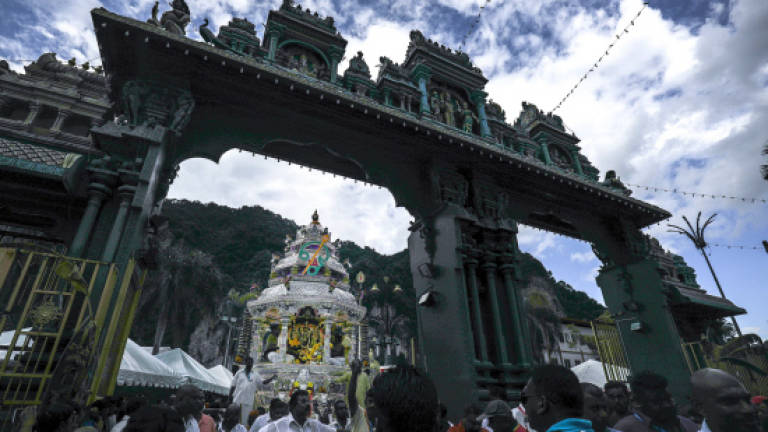Temple transformation community centre plays a pivotal role in shaping, uplifting B40 Indians

PUTRAJAYA: Hindu temple, which has been a focal point in the cultural and religious practices in the country, plays a pivotal role in shaping and uplifting the Indian community especially the households in the bottom 40% income category (B40).
In line with the Malaysian Indian Blueprint (MIB), Socioeconomic Development of Indian Community Unit (Sedic) director-general Prof Datuk N.S. Rajendran said six temples, with large Indian population in six states, were chosen to be the first batch in the pilot programme to make the house of worship a Transformation Centre, which will serve as consolidation and activity centre.
The six temples are the Sri Dandayuthapani Temple in Batang Berjuntai (Selangor); Sri Ganesar Temple in Kg Pandan (Kuala Lumpur); Sri Ganesar Temple in Kuala Kangsar (Perak); Sri Mariamman Temple in Sungai Petani (Kedah); Sri Muniswarar Temple in Jalan Baru, Prai (Penang); and Sri Subramaniar Temple in Masai (Johor).
Speaking to Bernama in a recent interview, Rajendran said temples had a significant role as a partner in supporting and developing the Indian community by carrying out educational, skills and empowering programmes to single mothers, both secondary and primary school students, as well as youths, including drop-outs and unemployed.
"An allocation of RM1.5 million has been distributed to the six temples, with each receiving RM250,000 to carry out various activities for the local community. Sedic has also prepared guidelines on what programmes they need to conduct especially in social and economic upliftment programme for women, as well as character building and skills training for youths," he said.
Temples as Transformation Centres were designed as part of the nine priority initiatives based on the MIB, which was tailored and launched by Prime Minister Datuk Seri Najib Tun Razak last year to address and increase the capabilities of Indians especially in the B40 bracket.
Elaborating on the programmes, Rajendran said it would include providing tuition classes for primary and secondary school students, providing transports for the poor households, and organising skill development activities like baking, sewing, bridal make-up and mehendi classes.
To date, Rajendran said some 3,000 people were benefiting from this programmes and activities, and Sedic was planning to roll it out to other houses of worship, such as gurdwaras and churches later this year.
"Sedic is monitoring and assessing the social contribution of temples and other Indian religious institutions involved in this community transformation initiative. It is going on well and positive," he said.
Since 2014, Rajendran said Sedic had disbursed RM230 million to more than 800 non-governmental organisations (NGOs) and the details were made available to the public at its website.
"We are in the midst of appointing a university and their research team as an independent body to evaluate the programme and impact assessment on Sedic, Secretariat of Empowerment of Indian Entrepreneurs (SEED) and Action Plan for the Future of Tamil Schools in Malaysia," he added. — Bernama